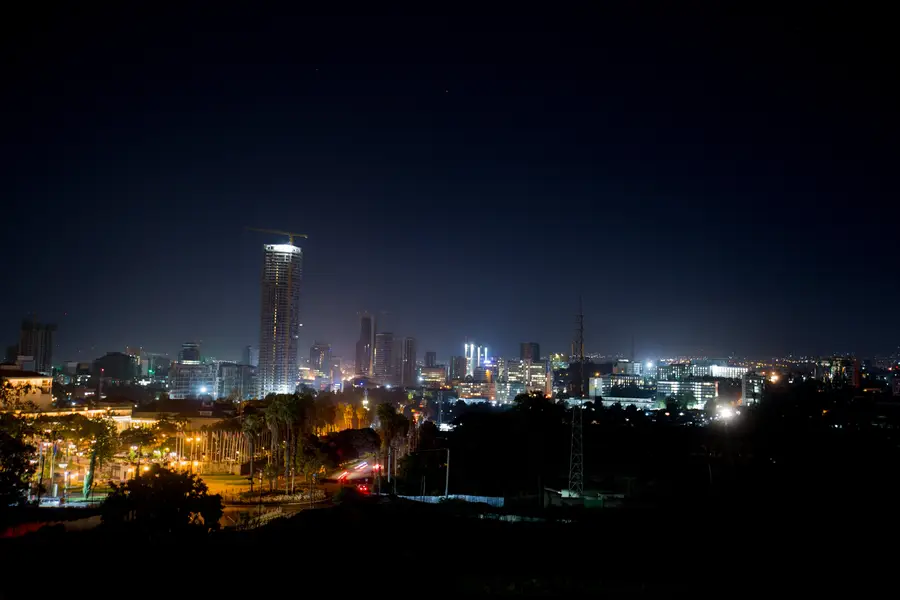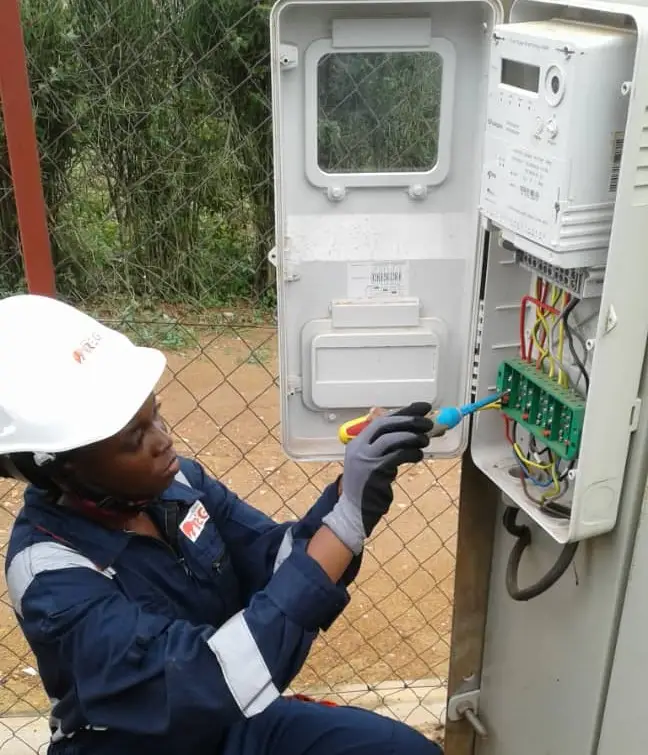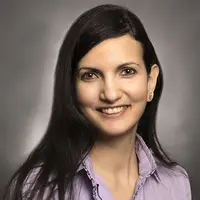Insights
Affordable energy for a more resilient Africa

City lights in Addis Ababa, Ethiopia. Photo Credit: Midas Touch for Power Africa East Africa Energy Program
Too often energy infrastructure is built in a bubble, with the focus being to attract users and achieve universal access to energy. The assumption is that new users will eventually pay for the investment that it took to build this infrastructure.
Yet, as countries in sub-Saharan Africa are building energy infrastructure to support growing commercialization and industrialization that fuels jobs and livelihood improvements, the cost of the energy generated remains too high. As a result, demand for power among households and businesses has remained low despite the increase in on-grid and off-grid connections and power generation over the past decade.
While it can be tempting to focus solely on increasing customers, without solvent utilities and well-functioning regulators, megawatt gains and goals cannot be sustainable. We propose a more holistic approach to energy that is focused on utilities, independent power producers, and governments in addition to customers.
The cost of energy in Africa
Power is an essential good that enables countries to build factories, electrify health facilities, and light schools. Africa is endowed with rich renewable energy resources and can bypass traditional energy development to green grids, but not without attention to affordable access.
Power costs range from 4 cents per kilowatt hour (kWh) to 25 cents per kWh, on average, across countries in East Africa, with outliers like Somalia charging up to 90 cents per kWh. U.S. users, by comparison, pay an average of 13 cents per kWh. When you consider that East African users have significantly less purchasing power than U.S. users, it becomes clear why East Africans use less energy annually: They can’t afford it.
This insufficient demand, which keeps the power that is available in East Africa today unaffordable and unreliable, shortchanges energy systems and starves growth. The USAID-funded Power Africa East Africa Energy Program (EAEP), led by RTI International, has experienced firsthand these challenges.

Roysambu Substation in Nairobi, Kenya. Photo Credit: Power Africa East Africa Energy Program
Unpacking energy affordability in Africa
So why is power so expensive in Africa? To understand this issue, we need to first define the main actors in the African power sector:
- Governments set policy priorities and support strategies for whole-of-energy approaches.
- Regulatory agencies act as independent bodies and set prices (tariffs) for power and monitor compliance.
- Power producers, who are typically private companies or state-owned enterprises, provide the power supply or generate megawatts.
- Distribution and transmission utilities purchase power supply from producers and distribute it to customers.
- Customers are the end-users of this power and have differing demand depending on whether they are individual households, businesses, or governments.
Ideally, these actors would all be connected with payments, customer data, and feedback flowing efficiently across them. Prices would be cost-reflective as well as affordable for customers, whose payments would fuel healthy utilities that can maintain and expand operations to serve even more customers. Governments would secure a mix of power options for their country and regulators would have the power to set cost-reflective but affordable tariffs. Producers would have the stability they need to explore new resources and increase operations.
EAEP has supported utilities, governments, and power producers to strive for this efficiency. EAEP and other Power Africa development partners have sought to bridge the transmission and distribution gaps to reach customers, address losses at the utility level, and advocate for a move towards cost-reflective tariffs with regulators.
However, demand stimulation and willingness-to-pay remain challenging in some East African countries, which further risks utility health and connectivity.

Yvonne N Mukundwa working on a metering unit in the Kamonyi district of Rwanda. Photo credit: Power Africa Women in Rwandan Energy Initiative
Building a more resilient energy system across East Africa
So, how can East African countries meet their energy needs to fuel achievement of their development goals? From our experience, we recommend three areas for intervention that go beyond solely generating megawatts and connections to addressing systemic challenges that hold energy systems back.
1. Countries should assess generation from their own national power resources and the national demand they can expect from customers. Least cost power development plans and “high-demand” scenarios are common among East African utility partners; however, few are using real-time data and consistent monitoring to adapt.
Better planning informs more accurate costs for power, which, if passed on to the consumer, can generate greater demand and improve affordability. Additionally, once a country can assess national resource potential and costs of development, they have a better understanding of their own energy security and can determine if power trade with other regional neighbors is advantageous.
For example, under EAEP, we supported Rwanda to develop a national power resource assessment system to inform their bi-annual power generation plans. EAEP met weekly with utility counterparts and Ministry of Infrastructure representatives to increase their capacity to conduct these assessments themselves and recalibrate their energy needs based on findings. This work is being expanded to integrate greenhouse gas emissions reduction, climate change mitigation and resource planning, which will help Rwanda adapt to climate shifts while enabling it to achieve its goal of net zero emissions by 2050.
2. Regulators and utilities should set tariffs that more closely match actual costs.
Regulatory agencies are often bound by political caps to keep tariffs low. This practice ignores utilities’ need to generate revenue, without which they can’t update infrastructure, leading to less reliable distribution of energy which further impedes customers’ willingness to pay.
One outlier is Uganda, whose Energy Regulatory Authority (ERA) holds the top spot for regulators in sub-Saharan Africa, according to the African Development Bank. Regular engagement between Uganda’s many utilities and service providers and ERA has led to more cost-reflective tariffs that support utilities’ health and their independence from outside influence. EAEP is conducting a benchmarking study to help ERA unpack equipment and material costs for transmission and distribution so it can incorporate reasonable costs into tariffs.
3. Focus on loss reduction and revenue generation for distribution utilities.
Utilities, as the link between producers and customers, are critical to power affordability and reliability. Utilities’ strength is in their ability to provider power to many customers at a low cost. Yet, according to the African Development Bank, most electricity companies in sub-Saharan Africa are insolvent and require government support to operate and expand access.
Hampered by political and industrial needs to produce more power and connect more customers while still being structured as government bodies or while transitioning to parastatals leaves them unable to recuperate costs from customers, advocate for cost-reflective tariffs, and invest in improvements that would increase reliability, leaving them continuously at risk.
EAEP and its utility partners in Kenya, Ethiopia, and Zanzibar are finding solutions. EAEP advisors work closely with utility staff to map customers, update organizational flows, plan anti-theft enforcement, re-engineer business processes, improve meter reading practices, and more. These methods contribute to better utility control over commercial losses and help them regain essential revenue for utility health. When they can offer reliable, efficient, and affordable power, they can draw users away from backup generators or captive power solutions.
Toward a more affordable energy future for Africa
While the challenge of affordable energy in sub-Saharan Africa is complex, the willingness to find solutions is high. We’ve seen this first-hand in our work. Countries and stakeholders are taking macroeconomic-level views of energy and addressing the capacity of energy sector actors to adequately plan, price, and provide power, with the support of donors.
Demand stimulation initiatives like productive use of energy campaigns and commercialization and industrialization incentives are helping attract large power users such as businesses and manufacturers. And with those large customers, the cost of energy can go down for everyone.
East African countries are also harnessing renewable energy resources to bring down costs and fuel their development with affordable and reliable power extended to more people.
Read more about RTI’s energy for development and our Center for Climate Solutions.
Sign up to receive news about our energy in development work.
Disclaimer: This piece was written by Rachel Friedman (Senior Energy Specialist), Ruba Amarin (Director, Advanced Energy Technologies) to share perspectives on a topic of interest. Expression of opinions within are those of the author or authors.


